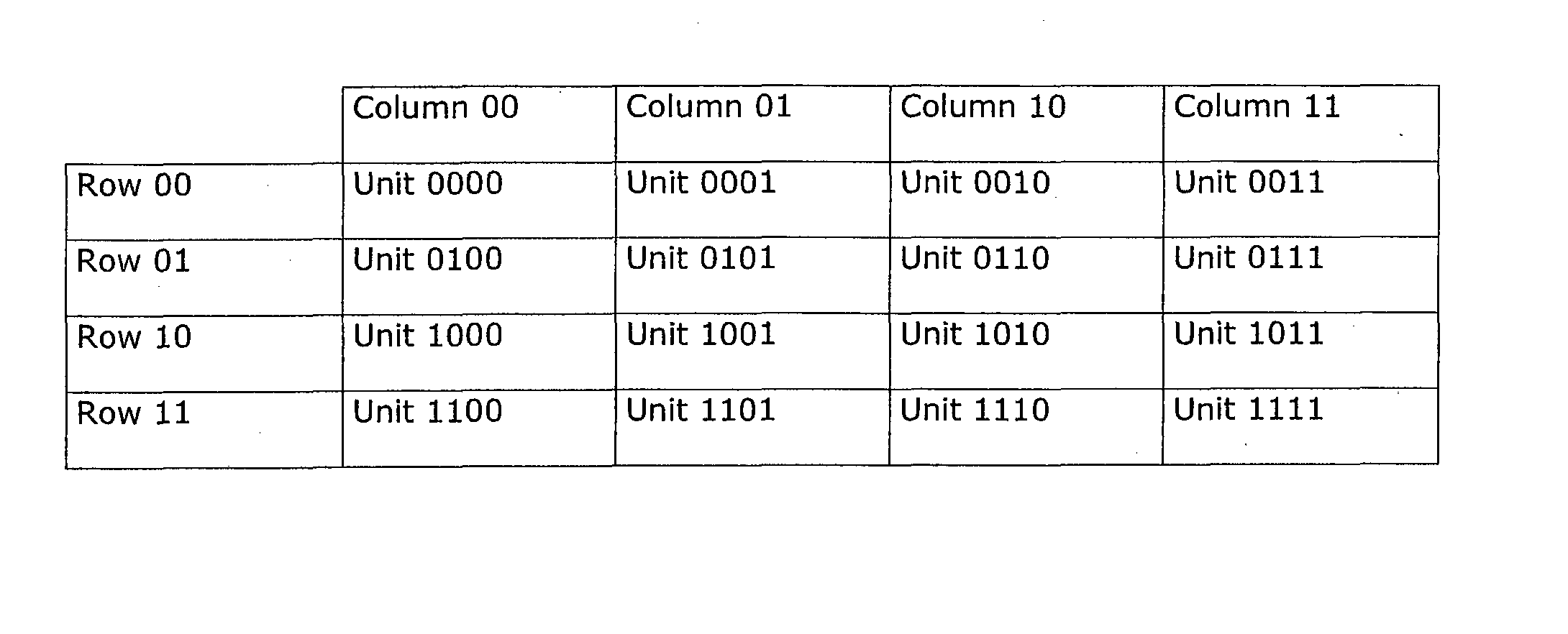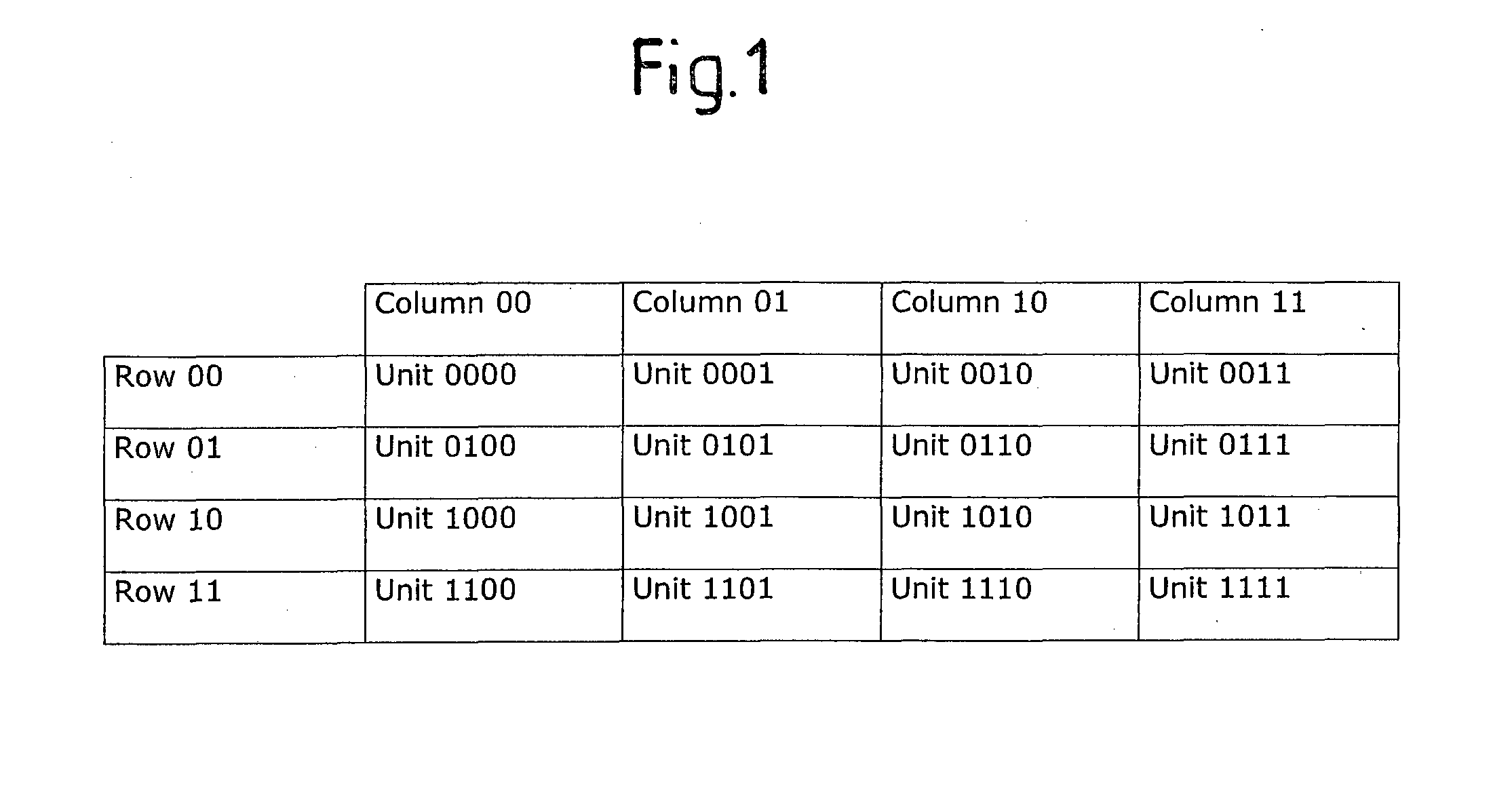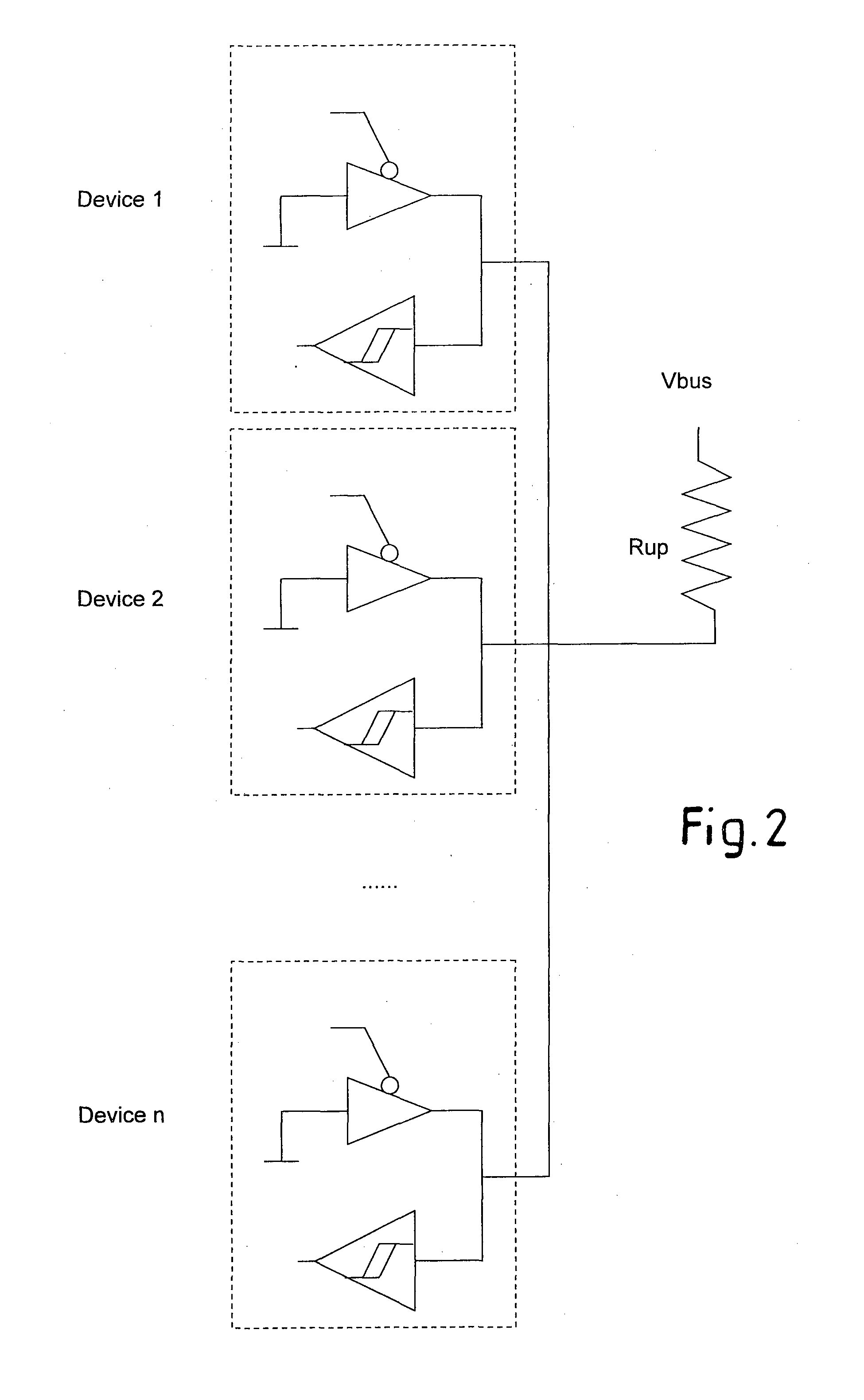Transmission Protocol
a technology of transmission protocol and address, applied in the field of information transmission, can solve the problems of limiting the potential of the device, errors in the reading of the address, and the applicability of the device to the address, so as to reduce the time and cost of data transmission
- Summary
- Abstract
- Description
- Claims
- Application Information
AI Technical Summary
Benefits of technology
Problems solved by technology
Method used
Image
Examples
Embodiment Construction
General Layout of the System and Definition of the Symbols
[0035]FIG. 2 shows a portion of a system in which n devices are present, indicated as D1, D2, . . . Di, . . . Dn. Each device Di is a generic electronic device that has to share information through a bus 1 to which it is connected. In the illustrated example, the bus is a single ended bus, but it must be understood that what is described below can also be embodied with a different bus or communication channel, for example a differential bus, i.e. with two wires. The sole requirement the bus must satisfy is that two digital signals must be identifiable on the bus, one strong or dominant (S) and the other one weak or recessive (W). This means that when an attempt is made to transmit two different signals on the bus 1, the strong signal dominates over the weak signal and the strong signal will be present on the bus, whilst the weak signal will be inhibited. That is, the following conditions hold true:
W+W=W
W+S=S
S+S=S
[0036]In t...
PUM
 Login to View More
Login to View More Abstract
Description
Claims
Application Information
 Login to View More
Login to View More - R&D
- Intellectual Property
- Life Sciences
- Materials
- Tech Scout
- Unparalleled Data Quality
- Higher Quality Content
- 60% Fewer Hallucinations
Browse by: Latest US Patents, China's latest patents, Technical Efficacy Thesaurus, Application Domain, Technology Topic, Popular Technical Reports.
© 2025 PatSnap. All rights reserved.Legal|Privacy policy|Modern Slavery Act Transparency Statement|Sitemap|About US| Contact US: help@patsnap.com



